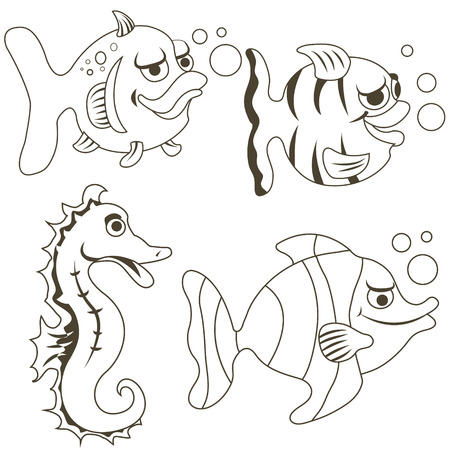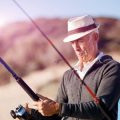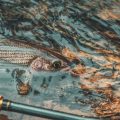1. Overlooking Seasonal Patterns
One of the biggest mistakes anglers make when targeting walleye is ignoring how dramatically their behavior shifts with the seasons. Walleye aren’t static—they migrate, feed, and spawn according to water temperature, daylight hours, and food availability. If you’re fishing with the same tactics year-round, you’re missing out on prime opportunities.
During spring, walleye move into shallower waters to spawn and are often more aggressive. This is a great time to use jigs and live bait near rocky shorelines or river inlets. Come summer, as water temperatures rise, walleye tend to head deeper during the day, seeking cooler temps and low light. Trolling crankbaits or using bottom bouncers along drop-offs can be highly effective.
In fall, walleye go on a feeding frenzy to bulk up for winter. Focus your efforts around baitfish schools and use faster retrieves or larger lures to match their heightened activity. Winter ice fishing requires a slower approach; walleye are less active and respond better to subtle jigging with smaller presentations.
Bottom line: Adapt your strategy based on the season. Pay attention to local reports, water temps, and daylight hours. Understanding these seasonal patterns will put you ahead of the game—and put more walleye in your boat.
2. Using the Wrong Bait or Lure
One of the biggest mistakes anglers make when targeting walleye is not matching their bait or lure to the conditions. Walleye can be notoriously picky, and what works one day might not work the next. Choosing the right presentation is essential for landing more fish, especially in American lakes and rivers where water clarity and weather can change fast.
Best Live Baits for Walleye
| Bait Type | When to Use | Tips |
|---|---|---|
| Nightcrawlers | Late spring through fall, especially in stained water | Thread onto a worm harness for trolling or use on a jighead for vertical presentations |
| Leeches | Early summer to mid-fall, clear to moderately clear water | Hook through the sucker end and let it wiggle naturally on a slip bobber rig |
| Minnows (Fatheads, Shiners) | Cold water months and early season; ideal in clear water | Lip-hook or dorsal-hook for live action; use with jig or plain hook |
Effective Artificial Lures for Walleye
| Lure Type | Conditions Best Suited For | Tactics |
|---|---|---|
| Jigs (1/8–1/2 oz) | All seasons; adjust color for water clarity (bright/chartreuse in murky, natural in clear) | Bounce along bottom or swim slowly near structure; tip with soft plastics or live bait |
| Crankbaits | Spring/fall; great for covering water fast in moderate clarity lakes/rivers | Troll or cast parallel to drop-offs and weed edges; vary retrieve speed to trigger strikes |
| Spinner Rigs | Warm months, especially over weedbeds or along mudflats in stained water | Crawl slowly behind a bottom bouncer; add nightcrawler for extra scent and movement |
Adapting to Water Clarity and Conditions
If you’re fishing in muddy or stained water, opt for brighter colored lures like chartreuse, orange, or firetiger patterns. In clear water, go with more natural colors such as silver, gold, or shad imitations. For live bait, lively minnows work best in clear conditions, while leeches and nightcrawlers often outperform when the water’s murky.
The Fix: Experiment and Observe!
The key is flexibility—carry a variety of baits and lures so you can quickly adapt to changing situations. Don’t be afraid to switch things up if you’re not getting bites. Pay attention to what local anglers are using and what’s currently hatching in the area. With a little trial-and-error and by matching your bait selection to conditions, you’ll avoid this common walleye mistake and reel in more fish.
![]()
3. Ignoring Water Depth and Structure
When you’re chasing walleye, overlooking water depth and underwater structure is one of the top mistakes anglers make. Walleye are notorious for hugging drop-offs, hanging around submerged humps, or lurking near weed lines—so just casting randomly into open water won’t cut it. Understanding how depth and structure influence walleye behavior can be the difference between a slow day and a cooler full of fish.
Why Depth Matters
Walleye are sensitive to light and temperature, often moving deeper during bright sunny days or when water warms up. If you’re fishing too shallow when they’ve gone deep, you’ll likely come up empty. Conversely, in low-light conditions or during early morning and late evening, they might move into shallower areas to feed.
The Role of Underwater Structure
Structure like rocks, sunken trees, ledges, and weed beds provide both cover and ambush points for walleye. These features attract baitfish, which in turn attracts hungry walleye. Simply put: if you want to find more fish, you need to find the structure.
How Sonar Tech Can Help
Modern sonar units (fish finders) are game-changers for identifying productive spots. Use your sonar to scan for drop-offs, submerged points, or transition zones where sand meets gravel. Mark these hotspots on your GPS and focus your efforts there instead of wasting time in featureless water. Don’t forget to adjust your lure depth based on what your electronics tell you—the most successful anglers are constantly matching their presentation to where the fish are holding.
Bottom line: Pay close attention to water depth and structure, use your tech tools wisely, and you’ll dramatically increase your odds of landing that trophy walleye.
4. Fishing at the Wrong Time of Day
One of the most common mistakes anglers make when targeting walleye is fishing during the wrong times of day. Walleye are notorious for being light-sensitive predators, and their feeding habits shift dramatically based on the sun’s position. Knowing when to hit the water can make or break your trip.
Understanding Walleye’s Peak Feeding Times
Walleye are most active during low-light conditions—early mornings, dusk, and nighttime. During these periods, their vision gives them an advantage over prey, making them more aggressive and willing to bite. Conversely, midday sunlight tends to push walleye into deeper, less accessible waters where they become sluggish and difficult to catch.
Best Times to Fish for Walleye
| Time of Day | Why It Works | Proven Tips |
|---|---|---|
| Early Morning (Pre-dawn to 9AM) | Walleye move into shallows to feed under low light. | Use crankbaits along weed edges; fish slowly near drop-offs. |
| Dusk (1 hour before sunset until dark) | Feeding activity spikes as daylight fades. | Target rocky points with live bait rigs or jigs; slow your retrieve. |
| Nighttime (After sunset) | Walleye hunt actively in shallow waters. | Casting minnow-imitating lures near shorelines is effective. |
How to Fix This Mistake
If you’ve been striking out during bright afternoons, adjust your schedule. Plan trips around sunrise or sunset. Invest in a quality headlamp for night fishing and learn how to quietly approach likely spots in low light. Also, keep an eye on moon phases—walleye often feed more aggressively under a new or full moon. By timing your trips with walleye’s natural rhythms, you’ll see a big uptick in bites—and bring home more fish at the end of the day.
5. Neglecting Stealth and Presentation
If you’ve ever fished for walleye during a tough bite, you know they can spook easily and turn downright picky. One of the biggest mistakes anglers make is underestimating the importance of stealth and a natural presentation. Let’s break down how to up your game when the bite gets tough.
Choose the Right Line
Walleye have sharp eyesight, especially in clear water. Using heavy, brightly colored line can tip them off that something isn’t right. Opt for low-visibility fluorocarbon or a thin-diameter braided line with a clear leader. This small tweak often results in more strikes when walleye get shy.
Quiet Boat Handling
Sound travels fast underwater, and walleye are quick to bolt if they sense something’s off. Avoid dropping gear on the deck, stomping around, or running your trolling motor at high speeds in shallow areas. When possible, drift quietly or use a push pole to sneak into promising spots. The quieter you are, the more natural your bait will look—and the less likely you’ll send fish scattering.
Nail the Natural Presentation
Presentation is king when walleyes are finicky. Use lighter jig heads, smaller hooks, and live bait rigs that let your offering move naturally with the current. If you’re casting or trolling, pay attention to speed—sometimes a subtle change is all it takes to trigger a bite. Vary your retrieve and don’t be afraid to slow things way down; sometimes letting your bait sit still is what seals the deal.
Pro Tip: Downsize Everything
When walleyes shut down, downsizing your tackle—from line to lures—can make all the difference. Finesse presentations like slip bobbers with small leeches or minnows are deadly in pressured waters.
Avoid Spooking Fish—Stay Stealthy
The bottom line? Walleye aren’t forgiving when it comes to careless noise or clumsy presentations. Dial in your approach by focusing on stealth and natural movement, and you’ll see more bites even when conditions get tough.
6. Not Adjusting to Weather and Water Conditions
If there’s one thing that separates rookie anglers from seasoned walleye pros, it’s the ability to adapt on the fly. The weather and water conditions can change fast, and walleye react accordingly. Ignoring these shifts is a big mistake—one that can leave you empty-handed even on the best lakes.
Understanding Walleye Behavior in Changing Conditions
Walleye are notorious for moving around based on light, temperature, and wind. A sunny, still morning might have them deep, while a windy afternoon could push them up onto shallower flats where baitfish get stirred up. If you’re not paying attention to what’s happening above and below the surface, you’re fishing blind.
Tips for Adapting Your Fishing Techniques
- Water Temperature: In spring and fall, when water is cool (45-55°F), focus on slower presentations like jigging or live bait rigs. As temperatures rise into summer (60°F+), try faster retrieves and crankbaits since walleyes become more aggressive.
- Wind: Don’t curse the breeze—embrace it! Wind pushes plankton and baitfish toward shorelines or points, which brings hungry walleye with them. Fish windblown areas for your best shot at active fish.
- Cloud Cover: Overcast days are often prime time. Walleye move shallow under cloud cover, feeding more aggressively than they do under bright sun. On sunny days, target deeper structure or use lighter line and natural-colored baits to avoid spooking wary fish.
Keep Moving and Stay Alert
The bottom line: don’t get stuck in a rut. If you’re not catching fish, tweak your depth, speed, lure color, or location based on what the weather and water are telling you. The most successful walleye anglers are always adapting—so make sure you do too if you want to fill your livewell.


